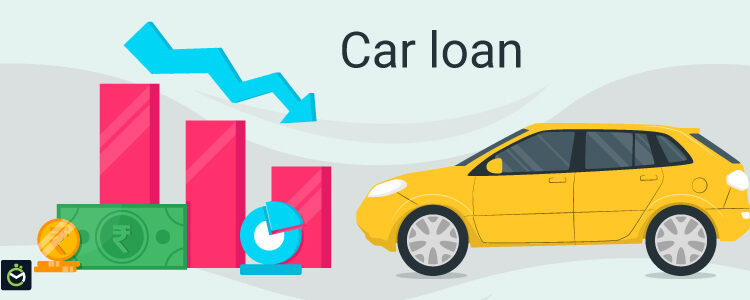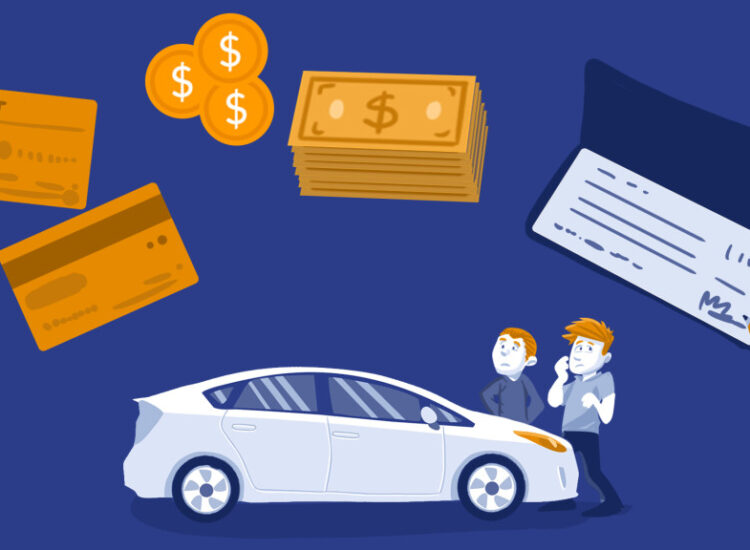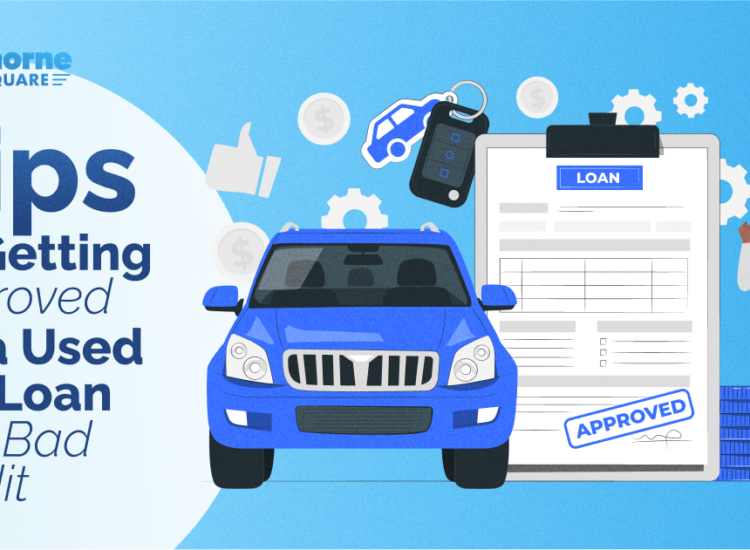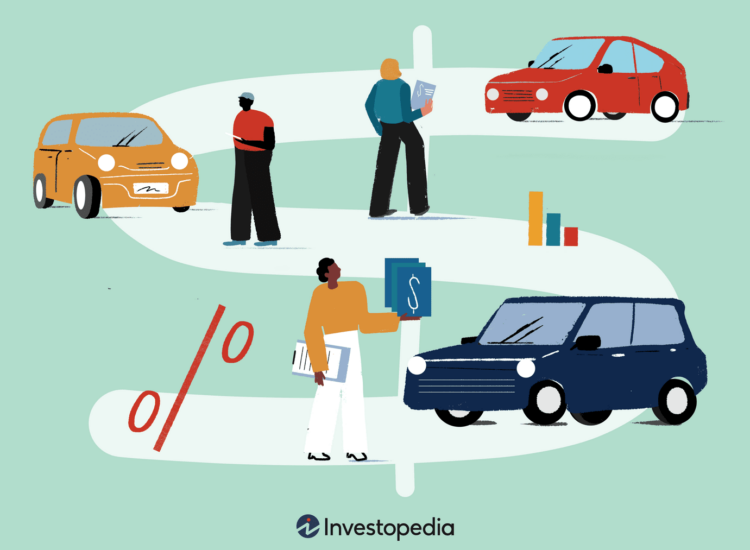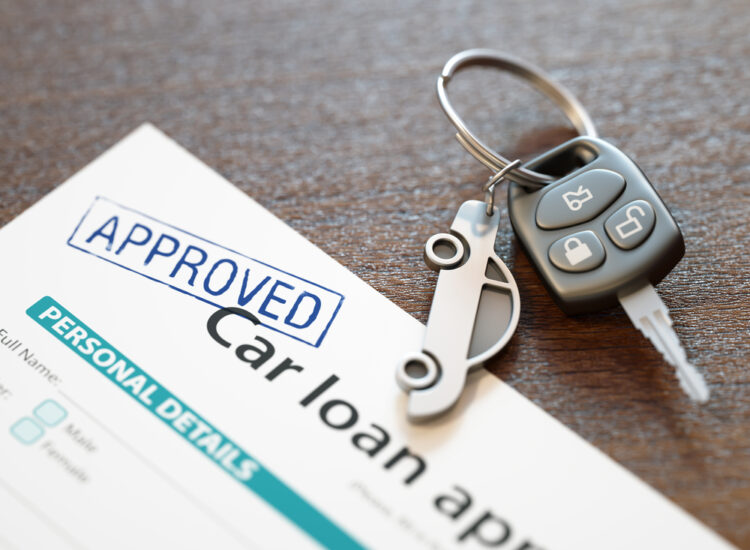Securing a vehicle is a significant milestone, representing freedom, convenience, and often a substantial financial commitment. For most individuals and businesses, this involves obtaining an auto loan, a financial instrument that makes vehicle ownership accessible by spreading the cost over time. While attention is often given to the vehicle’s price or the resulting monthly payment, the true cost of borrowing is encapsulated in a critical figure: the auto loan percentage rates. These rates, also known as auto loan interest rates or car loan percentage rates, represent the cost charged by a lender for the privilege of borrowing the principal amount required to purchase a vehicle. Understanding what are auto loan percentage rates, what factors cause them to vary so significantly, and how to influence and compare them is absolutely essential for anyone navigating the landscape of car financing. Even a seemingly small difference in the percentage rate can lead to substantial variations in the monthly payment and the overall total interest paid over the loan term. Factors ranging from an individual’s creditworthiness to the prevailing economic climate play a crucial role in determining the specific auto loan percentage rates offered by a lender. This comprehensive guide will delve into the specifics of auto loan percentage rates, explaining what this percentage truly signifies, discussing the key factors affecting auto loan rates (specifically focusing on how they impact the percentage), providing actionable strategies on how to get lower auto loan rates, and outlining methods to effectively compare auto loan rates to ensure you secure the best auto loan percentage rates possible for your vehicle loan.
Toc
Understanding the Percentage: What are Auto Loan Percentage Rates?
At the core of every auto loan agreement lies the interest rate, expressed as a percentage. This percentage is not just a number; it represents the fee you pay to the lender for borrowing the money, calculated on the outstanding balance over the life of the loan. Understanding what this percentage signifies and how it impacts your car financing is the foundational step in becoming a savvy car buyer.
Defining Auto Loan Percentage Rates: The Cost of Borrowing Expressed as a Percentage
Auto loan percentage rates, also commonly referred to as auto loan interest rates or car loan percentage rates, represent the cost of an auto loan expressed as a percentage of the principal amount borrowed. This percentage is the mechanism by which lenders earn a return on the funds they lend. It dictates how quickly interest accrues on your outstanding loan balance over time. When you see an advertisement or receive a quote for car loan rates, the number you are looking at is the projected auto loan percentage rate.
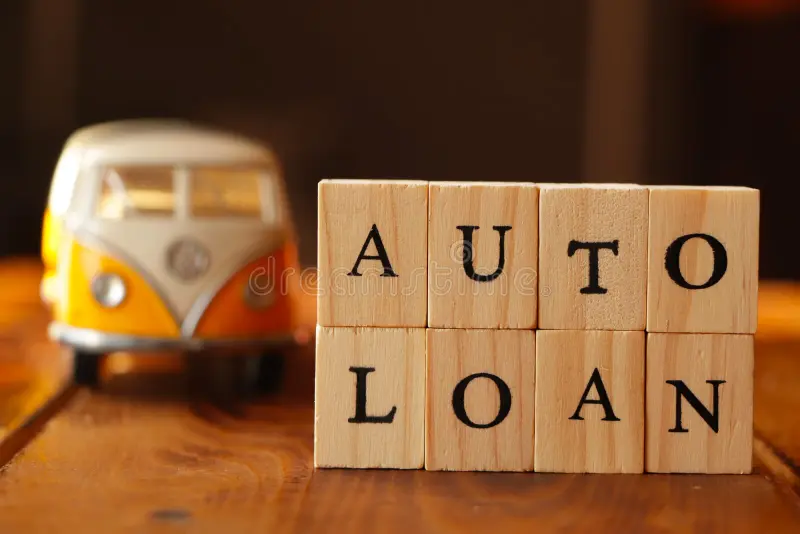
It’s important to understand that this percentage is applied periodically (usually monthly) to the remaining principal balance. As you make payments, a portion goes towards reducing the principal, meaning the amount on which the percentage rate is calculated decreases over the loan term. However, the initial balance is the highest, so more interest is paid in the early stages, even though the monthly payment remains constant. The higher the auto loan percentage rate, the more interest accrues each period, leading to a larger portion of your monthly payment being allocated to interest rather than principal reduction, particularly in the early part of the loan term. Conversely, a lower auto loan percentage rate means less interest accrues, allowing more of your payment to go towards reducing the principal balance, accelerating your progress towards paying off the loan. Understanding this fundamental concept is key to grasping what are auto loan percentage rates and their significance in car financing.
Interest Rate vs. APR: Getting the Full Picture of Auto Loan Percentage Rates
While the nominal interest rate is a significant component, the most accurate representation of the total auto loan percentage rates is the Annual Percentage Rate (APR). Understanding the difference between these two percentages is crucial when you compare auto loan rates from different lenders.
The stated interest rate is the basic percentage used to calculate the interest charged on the principal balance. However, many auto loans involve additional fees charged by the lender for processing the loan, such as origination fees, documentation fees, or administrative costs. These fees add to the overall cost of borrowing but are not included in the simple interest rate.
The auto loan APR, on the other hand, includes the interest rate plus these certain upfront fees, spread over the loan term and expressed as an annual percentage. The auto loan APR provides a standardized, more comprehensive measure of the total auto loan percentage rates you are paying for the privilege of borrowing the money. When compare auto loan rates from different lenders, always compare the APRs. A loan with a lower nominal interest rate but significant fees might have a higher auto loan APR than a loan with a slightly higher nominal interest rate but no fees. The auto loan APR is the most reliable figure for objectively assessing the total auto loan percentage rates and the true cost of different car financing offers. Looking solely at the simple interest rate can be misleading and cost you money in the long run.
The Direct Impact of Auto Loan Percentage Rates on Your Financial Future

The specific auto loan percentage rates you secure directly impact two key aspects of your car financing: your immediate budget and your long-term financial outlay. The percentage rate is not just a number on paper; it translates directly into dollars and cents that affect your monthly payment and the total amount you will pay back over the loan term.
2. https://sanduocpham.com.vn/mmoga-exploring-vehicle-financing-getting-an-auto-loan-with-capital-one/
A higher auto loan percentage rate results in a higher monthly payment, assuming the loan amount and loan term are the same. This is because more interest accrues each month, requiring a larger payment to cover both the increased interest and the necessary principal reduction. Conversely, a lower auto loan percentage rate leads to a lower monthly payment, making the vehicle seem more affordable on a month-to-month basis. This direct relationship highlights why securing a low auto loan percentage rate is essential for managing your monthly budget effectively when you get an auto loan.
Beyond the immediate monthly payment, the auto loan percentage rate has a compounding impact on the total interest paid over the entire loan term. A higher percentage rate means more interest accrues throughout the life of the loan, significantly increasing the overall amount of interest paid and, consequently, the total loan cost. Over a typical loan term of several years, even a difference of one percentage point in the auto loan percentage rate can result in paying hundreds or even thousands of dollars more in interest. Using an auto loan calculator vividly demonstrates this impact, allowing you to input different auto loan percentage rates and see how they change both the monthly payment and the total interest paid over the selected loan term. Understanding this impact underscores why securing the best auto loan percentage rates is a critical goal for smart car financing and long-term financial health.
Key Influences on Auto Loan Percentage Rates: Why Percentages Vary
The fact that auto loan percentage rates vary significantly from one borrower to the next and from one loan to another is a result of lenders evaluating various factors to assess the risk involved in lending. These are the key factors affecting auto loan rates, specifically determining the percentage rate you will be offered.
Your Creditworthiness: How Your Financial History Determines Your Car Loan Percentage Rates
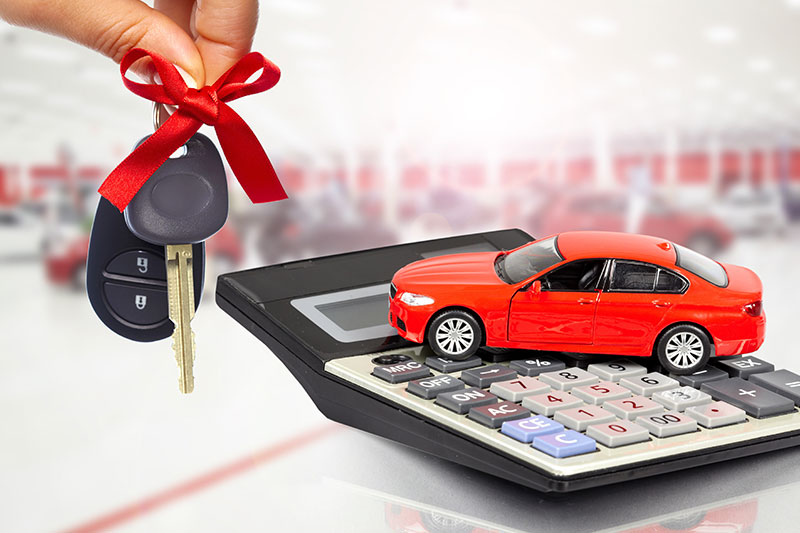
The most crucial factor influencing the auto loan percentage rates you qualify for is your creditworthiness, primarily reflected in your credit score and credit history. Lenders view your credit history as a predictor of your likelihood to repay borrowed money on time.
Your credit score is a numerical representation of your credit risk. Borrowers with excellent credit scores (generally in the upper range, indicating a history of responsible borrowing and repayment) are considered low risk by lenders and consistently qualify for the lowest available car loan percentage rates. As your credit score decreases, the perceived risk to the lender increases, resulting in higher auto loan percentage rates. Borrowers with lower credit scores or limited credit history may face significantly higher percentages or may only be able to obtain auto loans from specialized lenders who charge very high auto loan percentage rates to compensate for the increased risk.
Your credit history, including your payment history on past and current loans and credit cards, the amount of debt you currently owe, the length of your credit history, and the types of credit accounts you have, all contribute to your credit score and, consequently, are significant factors affecting auto loan rates at a percentage level. Lenders want to see a consistent record of timely payments and responsible credit management. A strong credit score auto loan connection means that improving your credit history is one of the most impactful actions you can take to secure a lower auto loan percentage rate.
Loan and Vehicle Specifics: Loan Term, Down Payment, and Vehicle Type’s Role in the Percentage
Beyond your credit profile, the specific characteristics of the auto loan and the vehicle being financed also play a vital role among the factors affecting auto loan rates, influencing the percentage rate offered.
- Loan Term: The length of the repayment period (loan term) has a direct impact on the auto loan percentage rate. While longer loan terms result in lower monthly payments, they typically come with slightly higher car loan percentage rates. This is because the lender is taking on the risk of the loan for a longer duration. Conversely, shorter loan terms are often associated with lower auto loan percentage rates. This presents a trade-off between immediate affordability and the percentage cost of borrowing over time.
- Down Payment: The amount of money you pay upfront towards the vehicle’s purchase (down payment) influences the auto loan percentage rate. A larger down payment reduces the loan amount and the loan-to-value ratio (the amount borrowed relative to the vehicle’s value), decreasing the lender’s risk. This often helps borrowers qualify for lower auto loan percentage rates. A smaller or no down payment increases the lender’s risk, potentially leading to higher percentages.
- New vs. Used Vehicle: The type of vehicle being financed is a significant factor. Auto loan percentage rates for new cars are almost always lower than those for used cars. New cars are generally less risky collateral as they depreciate at a slower initial rate and are less likely to have immediate mechanical issues. Used vehicles, particularly older ones with higher mileage, are considered higher risk, leading to higher car loan percentage rates.
- Used Vehicle Specifics: For used cars, the vehicle’s age, mileage, and overall condition can also influence the auto loan percentage rate offered. Lenders may have different rate tiers or eligibility requirements based on these factors.
These loan and vehicle-specific details are important factors affecting auto loan rates and should be considered when you get an auto loan and compare auto loan rates.
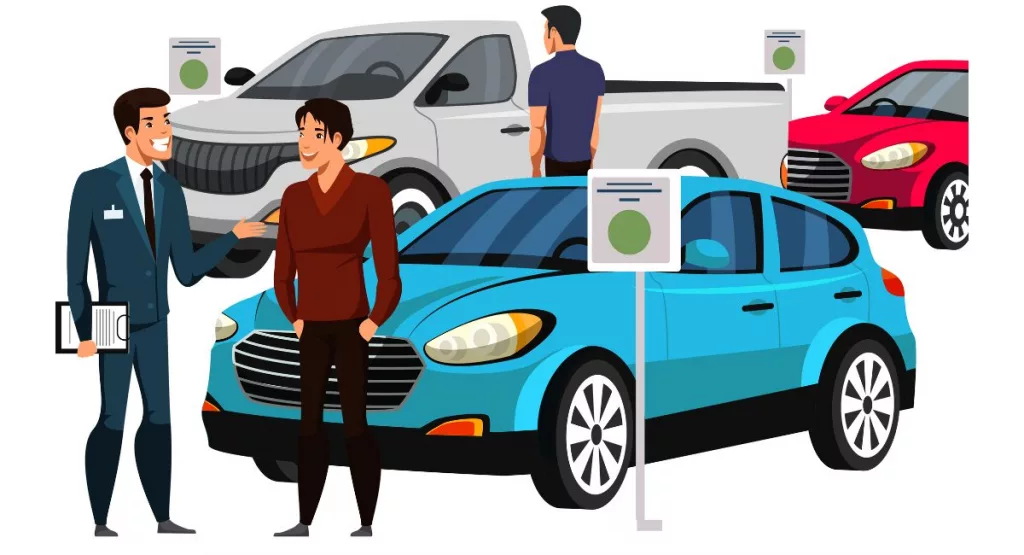
External Forces: Market Conditions and Lender Type Affecting Auto Loan Percentage Rates
Beyond individual borrower and loan characteristics, external factors related to the overall economy and the type of lender also contribute to the determination of auto loan percentage rates. These factors are often outside of the individual borrower’s direct control but influence the range of rates available in the market.
3. https://sanduocpham.com.vn/mmoga-exploring-the-auto-loan-credit-union-advantage/
4. https://sanduocpham.com.vn/mmoga-understanding-the-auto-loan-a-key-to-vehicle-ownership/
5. https://sanduocpham.com.vn/mmoga-exploring-vehicle-financing-getting-an-auto-loan-with-capital-one/
- Market Conditions: The broader economic environment, particularly the prevailing interest rates set by central banks (like the Federal Reserve in the U.S.), significantly influences the auto loan percentage rates offered by all lenders. When central banks raise interest rates, the cost of funds for lenders increases, which typically leads to higher average auto loan percentage rates and current auto loan percentage rates across the market. Conversely, when interest rates are lowered, auto loan percentage rates tend to decrease. While I cannot provide specific current auto loan percentage rates or average auto loan percentage rates due to real-time fluctuation, understanding that rates are influenced by these larger market forces is important.
- Lender Type: Different types of lenders operate with different business models and funding sources, which can affect the auto loan percentage rates they offer. For example, credit unions, as member-owned not-for-profits, may sometimes offer more competitive car loan percentage rates than traditional banks or finance companies. Online lenders may also offer competitive rates due to lower overhead costs. Captive finance companies (affiliated with car manufacturers) may offer promotional rates (like 0% financing) as incentives to sell specific vehicles, although eligibility for these promotional auto loan percentage rates is often limited to borrowers with excellent credit. The type of lender auto loan provider you choose can be one of the factors affecting auto loan rates you are offered.
These external forces, combined with your personal profile and loan specifics, collectively determine the final auto loan percentage rates you will encounter when seeking car financing.
Securing the Best Auto Loan Percentage Rates: Strategies for Comparison and Negotiation
Knowing what influences auto loan percentage rates is powerful, but the next step is to actively pursue and secure the lowest possible percentage rate available to you. Implementing strategic approaches for comparison and negotiation can lead to significant savings over the life of your auto loan.
Practical Steps: How to Lower Auto Loan Percentage Rates You Qualify For
There are concrete actions you can take to improve your chances of qualifying for lower car loan percentage rates. Focusing on how to get lower auto loan rates directly impacts the percentage rate you’ll be offered.
- Prioritize Improving Your Credit Score: This is the most impactful strategy for securing better auto loan percentage rates. Pay all bills on time, reduce your outstanding credit card balances (aiming for a credit utilization ratio below 30%), avoid opening unnecessary new credit accounts, and check your credit report for errors. A higher credit score auto loan connection directly translates to a lower auto loan percentage rate because lenders perceive less risk.
- Increase Your Down Payment: Making a larger down payment reduces the amount you need to borrow, which lowers the lender’s risk and can help you qualify for a lower auto loan percentage rate. It also has the added benefit of reducing your monthly payment and the total interest paid regardless of the rate.
- Choose a Shorter Loan Term: If your budget allows for a higher monthly payment, opting for a shorter loan term often qualifies you for a lower auto loan percentage rate. Lenders typically offer lower rates on shorter terms due to reduced risk exposure.
- Pay Down Other Debts: Reducing your overall debt burden, particularly high-interest debt like credit cards, improves your debt-to-income ratio, making you a more attractive borrower and potentially helping you secure a lower auto loan percentage rate.
- Shop for the Right Vehicle: If you are flexible, financing a new car typically comes with lower car loan percentage rates than financing a used car.
Implementing these practical steps addresses key factors affecting auto loan rates and can directly improve the auto loan percentage rates you are offered when you apply for auto loan financing.
Smart Comparison: Effectively Shopping for the Best Auto Loan Percentage Rates
Comparison shopping is essential for finding the best auto loan percentage rates available to you. Rates vary between lenders, and diligently comparing offers can lead to significant savings.
- Get Quotes from Multiple Lender Types: Don’t just check one bank. Compare auto loan rates from different sources: your current bank or credit union, other credit unions you are eligible for, reputable online lenders, and financing offered through the dealership. Different lender auto loan providers will offer varying auto loan percentage rates.
- Focus on the Auto Loan APR: When compare auto loan rates, always focus on the APR, not just the simple interest rate. The auto loan APR provides the true cost of borrowing as a percentage, including certain fees. This is the most accurate figure for comparing different offers side-by-side.
- Get Pre-Approved: Apply for pre-approval with 2-3 lenders within a short period (to minimize credit score impact). Pre-approval gives you a concrete offer, including the auto loan percentage rate you qualify for, which is invaluable for comparison and negotiation.
- Use an Auto Loan Calculator for Side-by-Side Analysis: Input the terms (loan amount, APR, loan term) from each pre-approval offer into an auto loan calculator. Compare the calculated monthly payment, total interest, and total loan cost side-by-side. This quantifies the impact of different auto loan percentage rates and terms.
- Read the Fine Print: Carefully review the loan estimates and terms from each lender. Look for any hidden fees, prepayment penalties, or restrictive clauses.
By systematically comparing offers using these methods, focusing on the auto loan APR and leveraging tools like an auto loan calculator, you maximize your chances of finding and securing the best auto loan percentage rates for your car financing.
Using Tools and Knowledge to Secure Favorable Car Loan Percentage Rates
Armed with information about auto loan percentage rates and competitive offers, you are in a strong position to negotiate and finalize your car financing on favorable terms.
- Know Your Credit Score and What Rates You Should Expect: Understanding your credit score auto loan connection and researching average auto loan percentage rates for similar credit profiles provides a realistic benchmark for what constitutes a good rate for you.
- Leverage Pre-Approval Offers: Present your best pre-approved offer (with its specific auto loan percentage rate) to the dealership’s finance department. They often work with multiple lenders and may be able to match or beat your outside offer to earn your car financing business. This negotiation is often focused on the offered percentage rate.
- Negotiate Car Price and Financing Separately: Ideally, finalize the purchase price of the vehicle before discussing financing. This allows you to focus on securing the lowest possible price for the car, then shift your focus to obtaining the most favorable auto loan percentage rates.
- Use Your Auto Loan Calculator in Real-Time: Have an auto loan calculator accessible (on your phone or a printout). If the dealership offers you a different financing term, immediately input their proposed loan amount, auto loan percentage rate (APR), and loan term to see the monthly payment and total cost. Compare this instantly to your existing offers.
Leveraging your understanding of auto loan percentage rates, your competitive offers from other lenders, and using tools like an auto loan calculator puts you in a powerful position to negotiate and secure the most favorable car loan percentage rates and overall terms for your car financing. This active approach is key to a successful auto loan process.
In conclusion, understanding what are auto loan percentage rates is fundamental to smart car financing. These rates, encompassing both the interest rate and the more telling auto loan APR, represent the cost of borrowing and directly impact your monthly payment and the total interest paid over the loan term. Numerous factors affecting auto loan rates, including your credit score auto loan connection, loan term, down payment, vehicle type, and market conditions, determine the specific auto loan percentage rates you are offered. To secure the best auto loan percentage rates, borrowers should take proactive steps on how to get lower auto loan rates (improving credit, increasing down payment), diligently compare auto loan rates from multiple lender auto loan options (focusing on APR), and leverage tools like an auto loan calculator to quantify costs and negotiate favorable car loan percentage rates. By focusing on understanding and optimizing their auto loan percentage rates, borrowers can achieve significant savings and secure more affordable car financing for their vehicle purchase.
